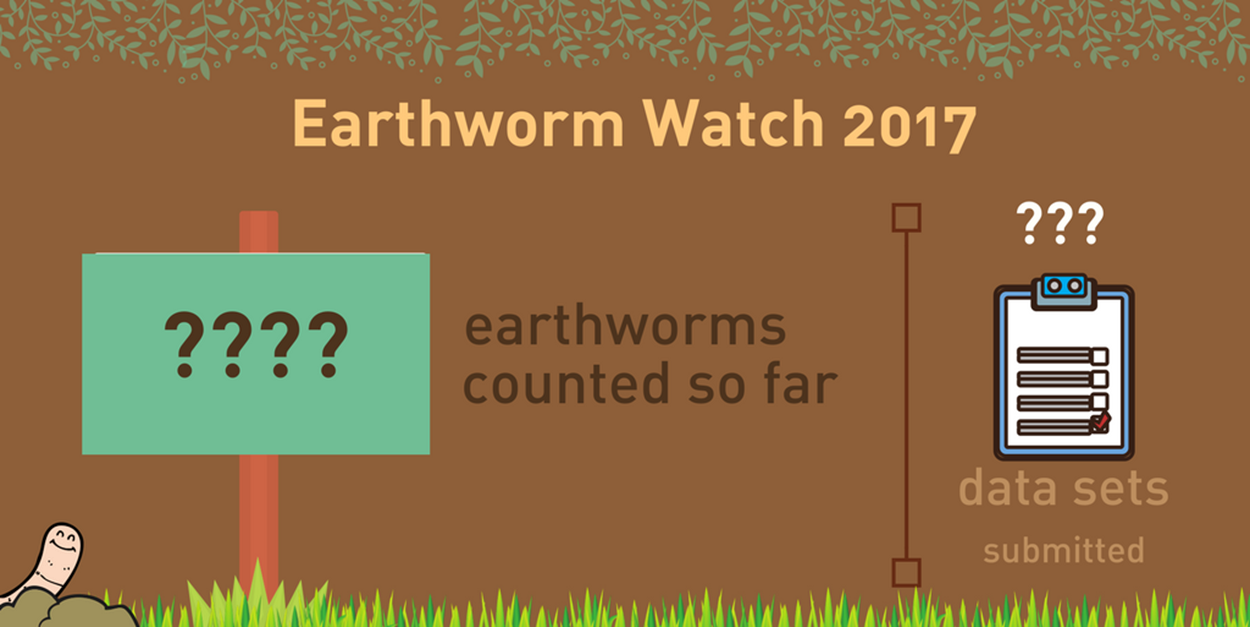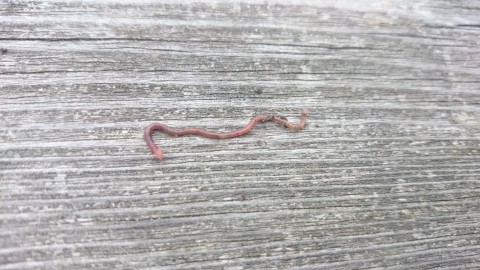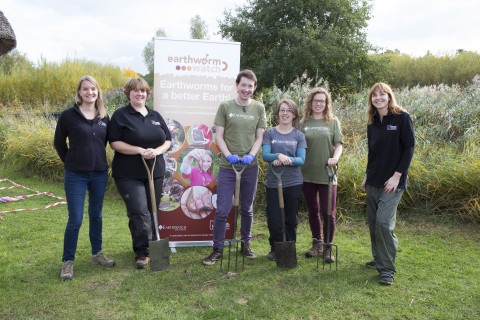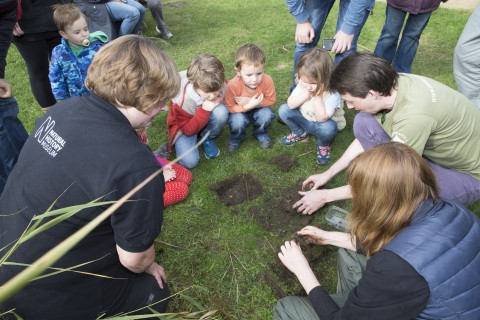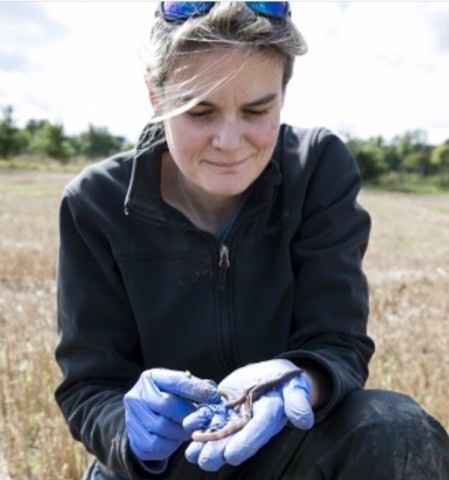The humble earthworm is often out of sight and out of mind, with many only surfacing under the cover of darkness to feed and mate. Despite our chance encounters with elusive earthworms, these salt of the earth creatures are busy continually ploughing the soil under our feet. This tireless burrowing has earned them the nickname of ecosystem engineers, as their burrows structure the earth, creating pores that stop the soil becoming waterlogged, by increasing water infiltration rates of up to 10 fold. It’s estimated that earthworms process 2–20 tonnes of organic matter per hectare each year, which is about the size of a rugby pitch, so they churn a huge volume of earth.
Earthworm Watchers have also been busy digging up their home turf and pastures new in search of worms. Citizen scientists have gathered 450 (paired) data points so far and all this digging has amounted in a huge quantity of soil being turned over. We calculated that 5400kg of earth has been moved by participants so far! Participants have spent over 1150 hours counting earthworms and categorizing soils and this has yielded a staggering 3368 earthworms so far.
Avid gardeners hit the worm jackpot, as they found an average of 50% more earthworms in areas containing organic fertilizer, regardless of habitat but crucially this was not found with artificial fertilisers.
Earthworms are detritivores, surviving on a diet of organic matter in the soil, including leaf litter and decaying plant materials, which could explain why the highest density of worms are found in vegetable beds. Their digestion breaks down this dead matter, unlocking nutrients like phosphorus10 and nitrogen, which can then be recycled by plants. Scientists have measured up to five fold increases in nitrogen availability in earthworm casts compared to undigested soil.
You can find our summary of the season here.
How can we support earthworms with organic fertilisers for healthier soils?
Fertilisers make crops grow faster and bigger, helping to increase crop yields by providing plants with water-soluble minerals they need to thrive. Organic fertilisers are derived from natural substances such as animal matter, manure and vegetable matter like compost while artificial fertilisers are produced from chemical processes. Garden Organic, a gardening charity based in Coventry who are passionate about Organic Growing and promote the use of organic growing methods. With over 50 years of experience they have a comprehensive set of advice pages to help improve soils including guidelines on organic soil care.
You can buy some naturally occurring organic fertilizers such as compost, manure, blood meal, bone meal and even seaweed but these can be expensive. Organic gardening needn’t cost the earth as there are many fertilisers you can make at home for free, and we have listed a few examples of these below to get you started:
Compost: Many people make their own compost from garden waste as this is an excellent way to recycle garden rubbish; you can read more about this in the Earthworm Watch guide here. Composting takes time for the nutrients to break down but there are some household ingredients that can easily be turned into fertiliser for a quick nutrient fix in the garden.
Cooking Water: Boiling ingredients such as potatoes, vegetables and eggs releases lots of different nutrients into the water. This can be used as a fertiliser but you must remember to let the water cool before watering plants.
Hair: Hair is a good source of nitrogen but it takes time to degrade in the soil, so should be used alongside compost or other fertilisers.
Banana peels or old bananas: Burying a banana or even just the leftover peel alongside your plants in the garden will enrich the soil with potassium and other minerals that plants need for healthy growth. This is particularly favoured for roses as they require a lots of minerals to help them bloom.
Eggshells: Eggshells are a good source of calcium but they must be dried and crushed so that the calcium is can be soaked up by the plant. Another approach is to add eggshells to your watering can as calcium will leach into the water.
Matches: Magnesium is a very important element that is involved in the process of photosynthesis and matches are a great source of it. A whole match can be buried alongside plant roots or soaked in water to dissolve the magnesium, for watering plants. Sandy soils often need magnesium supplements and crops like tomatoes and peppers, and even roses need an extra mineral boost.
Some of these might sound quite like quite inventive additions to the garden but there has been even stranger things used as fertiliser in the past.
Back when the first European settlers first reached North America, they documented that lobsters were so abundant that piles up to two feet high would wash ashore in Massachusetts. They were considered “cockroaches of the sea” and used for fertiliser by Native Americans and European settlers alike.
Cat Mummies:
Another even more peculiar fertiliser was found in the tombs and burial sites of ancient Egypt. In the late 19th Century cat mummies were so plentiful that English companies bought bulk shipments of them from Egypt for agricultural purposes. One company purchased about 180,000 cat mummies weighing around 19 tons, which were originally used as ballast to weigh down the hulls of cargo ships. These were then pulverised into fertiliser for farmer’s fields. One of the skulls from that shipment now resides at the natural history department of the British Museum.
As strange as these additions sound, researchers have discovered that humans began using manure as fertiliser for crops as far back as 8000BC when societies began cultivating plants and herding animals. Ever since then we have been looking for creative ways to farm and garden more efficiently with fertilisers, leading to some of the creative solutions above, from thrifty uses for household essentials to more inventive uses for surplus materials. Now you probably won’t find any mummified cats outside of a glass cabinet but you are bound to have left over banana peel and cooking water that could be recycled and put to good use!

